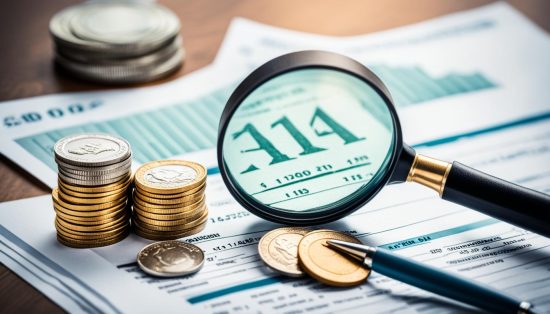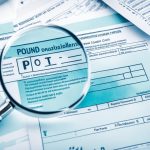Did you know that retirees in the UK could end up paying significant taxes on their pension income, reducing the amount of money they have available for their retirement years? It’s true. With the right knowledge and strategies, you can minimize your tax liabilities and maximize your retirement savings. In this article, we will explore various techniques and tips on how to avoid paying unnecessary taxes on your pension, allowing you to make the most of your hard-earned savings.
Understanding Your Pension Allowance
Your pension allowance is an important factor when it comes to managing your pension and minimizing tax liabilities. It refers to the maximum amount of money you can contribute to your pension each year without incurring tax penalties. By understanding the different types of pension allowances and exploring various strategies, you can reduce the tax on your pension and maximize your overall pension tax efficiency.
Types of Pension Allowances
There are two main types of pension allowances that you need to be aware of:
- Annual Allowance: This is the maximum amount you can contribute to your pension in a tax year without incurring tax charges. The current annual allowance for most individuals is £40,000, but this amount may be lower if you have a high income or have flexibly accessed your pension.
- Lifetime Allowance: The lifetime allowance is the maximum amount of pension savings you can accumulate without incurring additional tax charges. As of the 2021/2022 tax year, the lifetime allowance is £1,073,100.
It’s important to note that exceeding these allowances can result in additional tax charges, so it’s crucial to monitor your contributions and ensure they stay within the limits.

Maximizing Your Pension Tax Efficiency
To reduce tax on your pension withdrawals and maximize your pension tax efficiency, consider the following techniques:
- Utilizing Pension Tax Relief Options: Pension contributions are typically eligible for tax relief, meaning you can receive tax relief on the money you contribute to your pension. By taking advantage of this tax relief, you can effectively reduce the tax you pay on your pension contributions.
- Adopting Pension Tax Savings Techniques: There are various techniques you can use to minimize the tax on your pension withdrawals. For example, you can plan your withdrawals strategically to stay within lower tax brackets or consider taking advantage of tax-efficient pension vehicles, such as annuities or drawdown plans, which provide flexible options for managing your pension income.
By understanding your pension allowances, utilizing pension tax relief options, and adopting pension tax savings techniques, you can effectively reduce the amount of tax you need to pay on your pension. Taking proactive steps to maximize your pension tax efficiency will help you make the most of your retirement savings and ensure a financially secure future.
| Pension Tax Relief Options | Reducing Tax on Pension Withdrawals | Pension Tax Savings Techniques | Maximizing Pension Tax Efficiency |
|---|---|---|---|
| Utilize tax relief on pension contributions | Plan withdrawals strategically | Consider tax-efficient pension vehicles | Monitor contributions to stay within allowances |
| Explore salary sacrifice schemes | Manage pension income alongside other earnings | Optimize tax-efficient drawdown plans | Consult with a financial advisor for personalized advice |
| Take advantage of employer contributions | Consider deferring withdrawals to a later date | Utilize tax-efficient annuity options | Stay updated on pension tax legislation |
How to Avoid Paying Tax on Your Pension in the UK?
When planning your retirement, it’s essential to consider strategies that can help you reduce pension tax payments and maximize your retirement income. By implementing pension tax planning techniques and exploring pension tax avoidance strategies, you can minimize the tax burden on your pension in the UK. Here are some effective approaches to consider:
1. Utilize Tax-Efficient Investment Options
One way to reduce pension tax is by investing in tax-efficient vehicles such as Individual Savings Accounts (ISAs) and Self-Invested Personal Pensions (SIPPs). Both options provide tax benefits that can help maximize your savings and minimize your tax liabilities. ISAs offer tax-free growth and withdrawals, while SIPPs provide tax relief on contributions, allowing you to contribute pre-tax income into your pension.
2. Explore Pension Tax Relief Options
Pension tax relief is a valuable option that can help minimize tax payments on your pension contributions. By contributing to your pension, you can benefit from tax relief at your marginal tax rate, effectively reducing the amount of tax you owe. Understanding the available pension tax relief options and utilizing them effectively can significantly reduce your tax liabilities in retirement.
3. Engage in Pension Tax Planning Techniques
Pension tax planning involves carefully structuring your pension withdrawals and utilizing tax allowances to minimize your taxable pension income. By strategically planning your withdrawals and taking advantage of tax-free allowances such as the 25% tax-free lump sum, you can reduce the amount of tax you need to pay on your pension income.

4. Seek Professional Financial Advice
Minimizing pension tax payments requires a comprehensive understanding of the complex UK tax system. It is crucial to seek guidance from a qualified financial advisor who specializes in pension tax planning. They can provide personalized strategies tailored to your specific circumstances and help you navigate the intricacies of pension taxation.
5. Stay Updated on Pension Tax Regulations
Pension tax laws and regulations are subject to change, so it’s important to stay informed about any updates that may affect your pension tax planning. Regularly review your pension arrangements and consult with your financial advisor to ensure your pension tax planning remains effective and compliant with the latest regulations.
Ways to Reduce Your Taxable Pension Income
To minimize the amount of tax you need to pay on your pension income in the UK, there are several strategies you can employ. One effective way is to take advantage of the tax-free allowances available for pensions.
An important tax-free allowance to consider is the ability to take up to 25% of your pension as a tax-free lump sum. This means that you can withdraw a quarter of your pension without being taxed on it. However, please note that this is subject to a maximum allowance of £268,275.
By carefully planning your withdrawals to utilize this tax-free lump sum allowance, you can effectively reduce your taxable pension income and keep more of your hard-earned money in your pocket.
Additionally, it is important to consider other tax-saving strategies such as pension contributions and utilizing tax-efficient investment options like Individual Savings Accounts (ISAs) and Self-Invested Personal Pensions (SIPPs).
Example of Tax-Free Lump Sum Calculation:
| Total Pension Amount | Tax-Free Lump Sum | Taxable Pension Income |
|---|---|---|
| £150,000 | £37,500 (25% of pension) | £112,500 (£150,000 – £37,500) |
| £300,000 | £75,000 (25% of pension up to maximum allowance) | £225,000 (£300,000 – £75,000) |

By understanding and utilizing the tax-free allowances for pensions, you can effectively reduce your taxable pension income and maximize your pension contributions. However, it is important to consult with a financial advisor or tax professional to ensure that you are making the most of these opportunities within the legal boundaries.
Maximizing Tax-Free Allowance
To make the most of your tax-free allowance on your pension income, it’s essential to explore ways to claim back any excess tax paid. By understanding the threshold at which pensioners are required to start paying taxes on their income, you can effectively manage your earnings to stay below that threshold, maximizing the amount you can earn tax-free from your pension.
Claiming back tax on your pension income can help you optimize your financial situation. By ensuring that you’re not paying more tax than necessary, you can retain more of your hard-earned money and use it for your retirement plans. It’s important to seek professional advice on the process and requirements for claiming back pension tax.
Additionally, knowing the threshold for pensioners to start paying taxes on their income is crucial. Currently, in the UK, the threshold for basic-rate taxpayers stands at £12,570*. This means that if your total income, including your pension, is below this threshold, you won’t have to pay taxes on it*. Staying within this threshold allows you to maximize your tax-free earnings from your pension and keep more of your money.
To ensure you effectively maximize your tax-free allowance on your pension, it’s prudent to consult with a financial advisor who specializes in pension tax planning. They can help you navigate the complexities of claiming back tax and managing your pension income within tax-free limits, ultimately ensuring you make the most of your retirement funds.
*Please note that tax thresholds and regulations are subject to change. It’s important to stay informed about the latest tax legislation and consult with a financial advisor or HM Revenue and Customs (HMRC) for the most up-to-date information.

By carefully managing your pension income and availing opportunities to claim back tax, you can optimize your financial situation during retirement and enjoy a higher tax-free allowance on your earnings. Take control of your pension tax planning and ensure you make the most of your hard-earned money in your golden years.
Utilizing Tax Relief Options
Are you looking for ways to reduce the amount of tax you need to pay on your pension contributions? By taking advantage of tax relief options, you can effectively minimize your tax liabilities and maximize your retirement savings. In this section, we will explore various strategies to help you make the most of your pension and avoid unnecessary taxes.
Contribute More to Avoid 40% Tax
One effective way to reduce your tax burden is by contributing more into your pension. If you’re a high earner and currently subject to the 40% tax bracket, increasing your pension contributions can help bring your income into a lower tax bracket. By doing so, you can avoid paying 40% tax and instead pay a lower tax rate on your pension contributions.
Discover the Pension Loophole 500
The “pension loophole 500” is a tax-efficient method that allows you to transfer unused pension allowances to your spouse or partner. This strategy can help them utilize their unused pension allowances and potentially reduce their tax liabilities. By working with a financial advisor, you can understand how to make the most of this pension loophole and minimize the tax you and your partner need to pay on your pensions.
Implement Effective Tax Planning Strategies
There are various tax planning strategies that can further help you reduce your pension tax. These may include utilizing alternative tax-efficient investment options like Individual Savings Accounts (ISAs) and researching other tax relief options. By making informed decisions and implementing effective tax planning strategies, you can optimize your pension contributions and minimize your overall tax liabilities.
Working closely with a financial advisor who specializes in pension tax relief can provide invaluable guidance in navigating the complexities of the UK tax system. They can help you explore all available options and devise a tailored plan to ensure you make the most of tax relief opportunities, allowing you to maximize your retirement savings while minimizing taxes.
Next, we will discuss considerations for high-income earners and the potential penalties associated with avoiding pension tax. Stay tuned for more insights on how to optimize your pension and make informed financial decisions.
Considerations for High-Income Earners
High-income earners should be aware of the potential pitfalls of the 60% tax trap that may arise when their income surpasses certain thresholds, subjecting them to higher tax rates. It is crucial for high-income earners to carefully strategize their pension contributions and withdrawals to steer clear of this tax trap and avoid unnecessary and exorbitant taxes on their pension income.
1. Understanding the 60% Tax Trap
In the UK, the 60% tax trap comes into play when an individual’s income reaches a specific level, triggering higher tax rates. As a result, more of their pension income becomes taxable at this elevated rate, significantly impacting the amount of money they take home.
To prevent falling into the 60% tax trap, high-income earners must take a proactive approach to managing their pension contributions and withdrawals.
2. Strategic Pension Planning to Avoid the 60% Tax Trap
- Minimize Taxable Income: By exploring legal tax planning methods such as salary sacrifice, pension contributions can be increased, reducing taxable income and helping to avoid the 60% tax trap. This strategy allows high-income earners to channel more of their income into tax-advantaged pension funds, effectively lowering their overall tax liability.
- Consider Alternative Investment Vehicles: Diversifying investments outside of traditional pension schemes, such as Individual Savings Accounts (ISAs) or Venture Capital Trusts (VCTs), can provide additional income streams and potentially reduce the risk of crossing into the higher tax brackets.
- Timing of Withdrawals: Careful timing of pension withdrawals can also help high-income earners avoid the 60% tax trap. Spacing out withdrawals over several tax years or delaying withdrawals until retirement when income is expected to be lower can have a significant impact on the tax burden.
High-income earners should work closely with financial advisors who specialize in pension planning to ensure they have a tailored strategy in place that maximizes tax efficiency and protects their retirement income.
3. Potential Consequences of the 60% Tax Trap
Falling into the 60% tax trap can have detrimental effects on an individual’s retirement plans. It can substantially reduce the amount of money available for retirement and potentially jeopardize the desired standard of living during retirement years. It is crucial for high-income earners to be aware of the risks and take proactive measures to avoid this tax trap.
| Tax Rate | Income Range |
|---|---|
| 20% | Basic rate taxpayers |
| 40% | Higher rate taxpayers |
| 45% | Additional rate taxpayers |
| 60% | Income exceeding certain threshold* |
Note: *The income threshold at which the 60% tax rate applies may vary and can change over time. It is essential to stay updated on the current tax regulations and seek professional advice when planning pension contributions and withdrawals.
Potential Penalties for Avoiding Pension Tax
It is important to understand the implications of early or late withdrawals from your pension to avoid potential penalties for attempting to avoid pension tax through unlawful or fraudulent means. HM Revenue and Customs (HMRC) has strict regulations in place to prevent tax avoidance, ensuring a fair and transparent pension taxation system in the UK.
Engaging in illegal activities, such as early or late withdrawals from your pension to evade tax obligations, can have severe consequences. Individuals who violate tax laws by attempting to avoid pension tax can face financial penalties, legal repercussions, and damage to their reputation. It is crucial to work within the legal framework and seek professional advice to ensure compliance with HMRC regulations and avoid unintended violations.
Early withdrawals from your pension, before reaching the minimum retirement age, may be subject to significant tax charges. It is important to understand the rules and limitations surrounding early withdrawals to avoid unnecessary tax liabilities and penalties. Seeking guidance from a financial advisor can help you navigate these complexities and make informed decisions regarding your pension withdrawals.
Similarly, late withdrawals from your pension, beyond the age at which you are required to start taking withdrawals, can also result in penalties. Delaying your pension withdrawals can lead to higher tax liabilities and potential fines. Understanding the age at which you must begin withdrawing from your pension is crucial in order to avoid unnecessary penalties and efficiently manage your retirement savings.
By working within the legal boundaries, you can ensure compliance, make informed decisions, and avoid potential penalties associated with attempting to avoid pension tax. Consultation with a financial advisor who specializes in pension taxation can provide valuable insights and guidance tailored to your specific circumstances.
| Potential Penalties for Avoiding Pension Tax | Description |
|---|---|
| Financial Penalties | Individuals who engage in unlawful activities to avoid pension tax may face financial penalties, resulting in significant monetary losses. |
| Legal Consequences | Violating tax laws by attempting to evade pension tax can lead to legal repercussions, including investigations, court proceedings, and potential criminal charges. |
| Reputation Damage | Engaging in fraudulent activities to avoid pension tax can have long-lasting consequences for your reputation, impacting personal and professional relationships. |
The Role of Pension Contributions in Tax Planning
Pension contributions play a crucial role in tax planning, as they can provide tax relief that helps reduce your overall tax liabilities. By contributing to your pension, you can benefit from tax relief at your marginal tax rate, potentially reclaiming tax paid on your contributions. Understanding the rules and regulations surrounding pension tax relief is key to maximizing the tax benefits of your contributions.
Maximizing Tax Relief
One of the main advantages of pension contributions is the potential to claim tax relief. When you contribute to your pension, the government adds tax relief to your contributions, boosting the amount of money in your pension fund. The amount of tax relief you receive depends on your marginal tax rate.
For example, if you are a basic rate taxpayer, for every £80 you contribute to your pension, the government adds an additional £20 in tax relief, making the total contribution £100. As a higher or additional rate taxpayer, you can claim even more tax relief. This effectively reduces the amount of tax you need to pay on your income.
1. Tax Relief Limits
It’s important to note that there are limits to the amount of tax relief you can claim on pension contributions. The annual allowance is the maximum amount you can contribute to your pension each year and still receive tax relief. For the 2021/2022 tax year, the annual allowance is £40,000.
However, if you have already started accessing your pension flexibly, the money purchase annual allowance (MPAA) may apply. The MPAA limits the amount of tax relief you can claim to £4,000 per year.
Additionally, the lifetime allowance is the total value of pensions you can have without incurring a tax charge when you start taking money from your pension. For the 2021/2022 tax year, the lifetime allowance is £1,073,100.
2. Claiming Back Tax on Your Pension Contributions
If you are a higher or additional rate taxpayer, you may be able to claim back additional tax relief on your pension contributions. This can be done through your self-assessment tax return. By indicating your pension contributions on your tax return, you can potentially reclaim the difference between the basic and higher/additional rate of tax paid.
For example, if you are a higher rate taxpayer and contribute £10,000 to your pension, you can claim back an additional £2,500 in tax relief, making your total contribution effectively £7,500.
It’s important to keep track of your pension contributions and consult with a financial advisor or tax specialist to ensure you are maximizing your tax relief effectively and within the guidelines set by HM Revenue and Customs.
If you’re unsure about the tax implications of your pension contributions or how to claim back tax relief, it’s always best to seek professional advice. A qualified financial advisor can provide personalized guidance based on your individual circumstances, helping you make the most of the tax benefits available and optimize your pension tax planning.
Conclusion
In conclusion, minimizing the tax on your pension is vital for enhancing your retirement savings. By understanding the various aspects of pension taxation, exploring tax relief options, and implementing tax-efficient pension planning strategies, you can significantly reduce your tax liabilities and maximize your retirement income. It is crucial to seek professional advice from experienced financial advisors who can provide guidance tailored to your specific circumstances.
By staying informed about the latest tax regulations and taking advantage of pension tax efficiency methods, such as utilizing tax relief options and making informed investment decisions, you can avoid excessive tax burdens on your retirement income. Remember to evaluate your pension options regularly to ensure they align with your long-term financial goals and the prevailing tax laws.
Investing time and effort in tax-efficient pension planning can make a substantial difference in your financial security during retirement. Make the most of the resources available to you, such as pension tax relief and other government schemes that encourage retirement savings. Prioritizing tax-efficient pension planning not only helps you avoid tax on retirement income but also allows you to enjoy the fruits of your labor without unnecessary financial burdens.
FAQ
1. Can I take 25% of my pension tax-free every year?
Yes, you can usually take up to 25% of your pension as a tax-free lump sum each year.
2. What is the tax-free allowance for pensions?
The tax-free allowance for pensions is the amount of money you can contribute to your pension each year without incurring tax penalties.
3. How much tax do I pay on my UK pension?
The amount of tax you pay on your UK pension depends on factors such as your income, the type of pension you have, and your personal tax allowance.
4. How to reduce pension tax?
There are several strategies you can employ to reduce pension tax, such as utilizing tax-efficient investment options, exploring pension tax relief options, and engaging in pension tax planning techniques.
5. What is the pension loophole 500?
The pension loophole 500 refers to a tax-efficient method of transferring unused pension allowances to maximize tax savings.
6. Can I pay more into pension to avoid 40% tax?
Yes, contributing more into your pension can help you avoid 40% tax on your income.
7. What is the 60% tax trap?
The 60% tax trap refers to the situation where high-income earners fall into higher tax brackets, resulting in a higher tax rate on their pension income.
8. What is pension tax relief?
Pension tax relief is a benefit provided by the government that allows individuals to receive tax relief on their pension contributions.
9. Can I claim back the tax on my pension?
Yes, you may be able to claim back any excess tax paid on your pension income.
10. How much can a pensioner earn before paying taxes?
The amount a pensioner can earn before paying taxes depends on their personal tax allowance and any additional income sources.
11. Can I take my pension at 55 and still work?
Yes, you can usually take your pension at age 55 and continue working.
12. How to avoid paying tax on your pension?
To avoid paying tax on your pension, you can utilize tax-efficient investment options, explore pension tax relief options, and engage in pension tax planning techniques.




















No Comments
Leave a comment Cancel